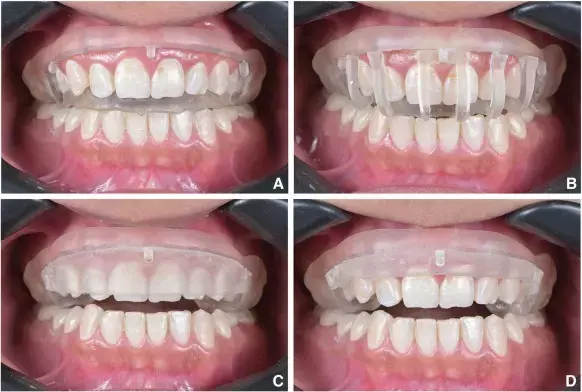- Home
- Medical news & Guidelines
- Anesthesiology
- Cardiology and CTVS
- Critical Care
- Dentistry
- Dermatology
- Diabetes and Endocrinology
- ENT
- Gastroenterology
- Medicine
- Nephrology
- Neurology
- Obstretics-Gynaecology
- Oncology
- Ophthalmology
- Orthopaedics
- Pediatrics-Neonatology
- Psychiatry
- Pulmonology
- Radiology
- Surgery
- Urology
- Laboratory Medicine
- Diet
- Nursing
- Paramedical
- Physiotherapy
- Health news
- Fact Check
- Bone Health Fact Check
- Brain Health Fact Check
- Cancer Related Fact Check
- Child Care Fact Check
- Dental and oral health fact check
- Diabetes and metabolic health fact check
- Diet and Nutrition Fact Check
- Eye and ENT Care Fact Check
- Fitness fact check
- Gut health fact check
- Heart health fact check
- Kidney health fact check
- Medical education fact check
- Men's health fact check
- Respiratory fact check
- Skin and hair care fact check
- Vaccine and Immunization fact check
- Women's health fact check
- AYUSH
- State News
- Andaman and Nicobar Islands
- Andhra Pradesh
- Arunachal Pradesh
- Assam
- Bihar
- Chandigarh
- Chattisgarh
- Dadra and Nagar Haveli
- Daman and Diu
- Delhi
- Goa
- Gujarat
- Haryana
- Himachal Pradesh
- Jammu & Kashmir
- Jharkhand
- Karnataka
- Kerala
- Ladakh
- Lakshadweep
- Madhya Pradesh
- Maharashtra
- Manipur
- Meghalaya
- Mizoram
- Nagaland
- Odisha
- Puducherry
- Punjab
- Rajasthan
- Sikkim
- Tamil Nadu
- Telangana
- Tripura
- Uttar Pradesh
- Uttrakhand
- West Bengal
- Medical Education
- Industry
Ultrathin Zirconia Laminate Veneers Fabricated Using Conventional and Speed Sintering have similar esthetics and strength: Study

Ultrathin Zirconia Laminate Veneers Fabricated Using Conventional and Speed Sintering have similar esthetics and strength suggests a new study published in the Journal of Prosthetic Dentistry. The application of highly translucent multilayered zirconia ceramic in minimally invasive esthetic dentistry allows the achievement of both esthetics and strength with minimal thickness. Clinical...
Ultrathin Zirconia Laminate Veneers Fabricated Using Conventional and Speed Sintering have similar esthetics and strength suggests a new study published in the Journal of Prosthetic Dentistry.
The application of highly translucent multilayered zirconia ceramic in minimally invasive esthetic dentistry allows the achievement of both esthetics and strength with minimal thickness. Clinical studies that have assessed the performance of zirconia ultrathin veneers sintered with conventional and speed procedures are lacking. This clinical study aimed to evaluate the effect of speed sintering processes on the translucency and clinical performance of zirconia laminate veneers. Four participants had their teeth restored with 32 ultra translucent zirconia laminate veneers. Based on the zirconia sintering procedure, the participants were randomly allocated into 2 groups. The teeth were prepared by selective reduction over trial restorations. Zirconia veneers were milled from multilayer zirconia blanks and sintered either by speed sintering or conventional sintering as specified by the manufacturer’s recommendations. The intaglio surface of the veneers was airborne-particle abraded with 50-μm aluminium-oxide, and the veneers were then adhesively bonded to the teeth with translucent light-polymerizing resin cement. The modified California Dental Association (CDA)/Ryge criteria were used to assess participants at baseline and every 3 months for 12 months: the translucency and the colour difference of the tooth before and after veneer restoration were evaluated. For statistical analysis, the Pearson chi-squared test, independent t-test, and paired t-test were used (α=.05).
Results: Translucency and colour differences were significantly higher in the conventionally sintered group (P<.05). No restorations were lost. No significant differences were found between the 2 groups in the CDA/Ryge criteria or colour parameter after follow-up intervals (P>.05). The primary qualitative changes observed at the final recall were marginal integrity and marginal discolouration. The colour match and zirconia surface were rated Alfa. After 1 year of follow-up, both conventional and speed-sintered ultrathin zirconia laminates showed satisfactory functional, esthetic, and colour stability outcomes.
Reference:
Yousry M, Hammad I, El Halawani M, Aboushelib M. Randomized clinical trial of zirconia laminate veneers sintered by using conventional versus speed process: 1-year follow-up. J Prosthet Dent. 2024 May 31:S0022-3913(24)00352-4. doi: 10.1016/j.prosdent.2024.04.031. Epub ahead of print. PMID: 38824110.
Dr. Shravani Dali has completed her BDS from Pravara institute of medical sciences, loni. Following which she extensively worked in the healthcare sector for 2+ years. She has been actively involved in writing blogs in field of health and wellness. Currently she is pursuing her Masters of public health-health administration from Tata institute of social sciences. She can be contacted at editorial@medicaldialogues.in.
Dr Kamal Kant Kohli-MBBS, DTCD- a chest specialist with more than 30 years of practice and a flair for writing clinical articles, Dr Kamal Kant Kohli joined Medical Dialogues as a Chief Editor of Medical News. Besides writing articles, as an editor, he proofreads and verifies all the medical content published on Medical Dialogues including those coming from journals, studies,medical conferences,guidelines etc. Email: drkohli@medicaldialogues.in. Contact no. 011-43720751


